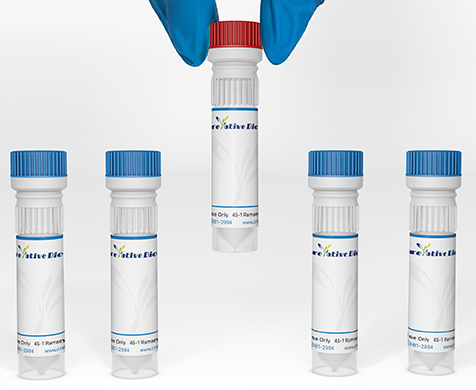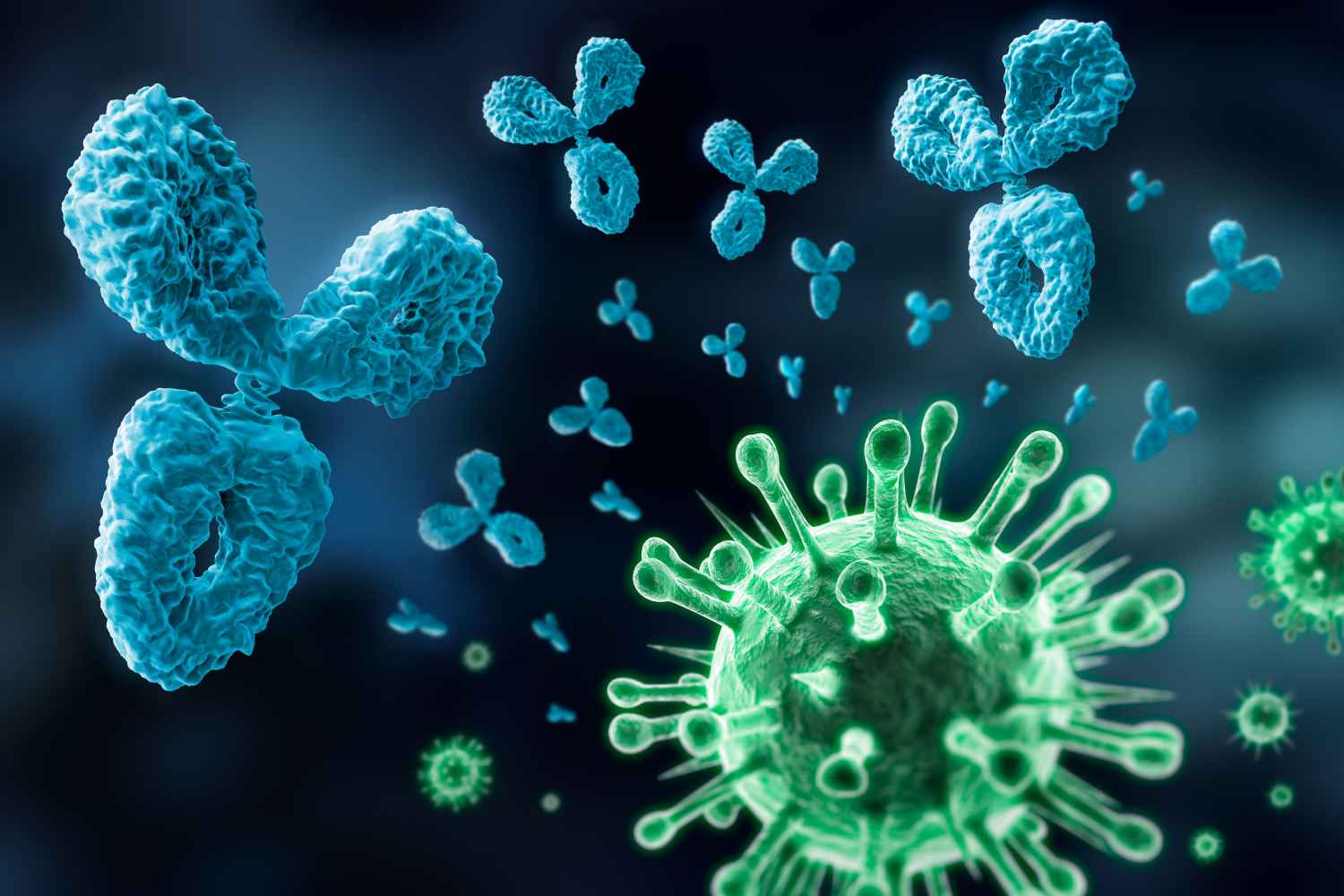PARD3
PARD proteins, which were first identified in C. elegans, are essential for asymmetric cell division and polarized growth, whereas CDC42 (MIM 116952) mediates the establishment of cell polarity. The CDC42 GTPase, which is controlled by nucleotide exchange factors (GEFs; see MIM 606057) and GTPase-activating proteins (GAPs; see MIM 604980), interacts with a large set of effector proteins that typically contain a CDC42/RAC (MIM 602048)-interactive binding (CRIB) domain.[supplied by OMIM
Full Name
par-3 partitioning defective 3 homolog (C. elegans)
Function
Adapter protein involved in asymmetrical cell division and cell polarization processes (PubMed:27925688, PubMed:10954424).
Seems to play a central role in the formation of epithelial tight junctions (PubMed:27925688).
Targets the phosphatase PTEN to cell junctions (By similarity).
Involved in Schwann cell peripheral myelination (By similarity).
Association with PARD6B may prevent the interaction of PARD3 with F11R/JAM1, thereby preventing tight junction assembly (By similarity).
The PARD6-PARD3 complex links GTP-bound Rho small GTPases to atypical protein kinase C proteins (PubMed:10934474).
Required for establishment of neuronal polarity and normal axon formation in cultured hippocampal neurons (PubMed:19812038, PubMed:27925688).
Seems to play a central role in the formation of epithelial tight junctions (PubMed:27925688).
Targets the phosphatase PTEN to cell junctions (By similarity).
Involved in Schwann cell peripheral myelination (By similarity).
Association with PARD6B may prevent the interaction of PARD3 with F11R/JAM1, thereby preventing tight junction assembly (By similarity).
The PARD6-PARD3 complex links GTP-bound Rho small GTPases to atypical protein kinase C proteins (PubMed:10934474).
Required for establishment of neuronal polarity and normal axon formation in cultured hippocampal neurons (PubMed:19812038, PubMed:27925688).
Biological Process
Asymmetric cell divisionManual Assertion Based On ExperimentTAS:ProtInc
AxonogenesisManual Assertion Based On ExperimentTAS:UniProtKB
Bicellular tight junction assemblyISS:UniProtKB
Cell adhesionManual Assertion Based On ExperimentIBA:GO_Central
Cell cycleIEA:UniProtKB-KW
Establishment of cell polarityManual Assertion Based On ExperimentIBA:GO_Central
Establishment of centrosome localizationManual Assertion Based On ExperimentIBA:GO_Central
Establishment of epithelial cell polarityISS:UniProtKB
Establishment or maintenance of cell polarityManual Assertion Based On ExperimentTAS:UniProtKB
Establishment or maintenance of epithelial cell apical/basal polarityManual Assertion Based On ExperimentIDA:ComplexPortal
Microtubule cytoskeleton organizationManual Assertion Based On ExperimentIBA:GO_Central
Myelination in peripheral nervous systemISS:UniProtKB
Negative regulation of peptidyl-threonine phosphorylationISS:UniProtKB
Positive regulation of myelinationISS:UniProtKB
Protein kinase C-activating G protein-coupled receptor signaling pathwayManual Assertion Based On ExperimentTAS:UniProtKB
Protein localizationManual Assertion Based On ExperimentIBA:GO_Central
Protein targeting to membraneISS:UniProtKB
Protein-containing complex assemblyManual Assertion Based On ExperimentTAS:ProtInc
AxonogenesisManual Assertion Based On ExperimentTAS:UniProtKB
Bicellular tight junction assemblyISS:UniProtKB
Cell adhesionManual Assertion Based On ExperimentIBA:GO_Central
Cell cycleIEA:UniProtKB-KW
Establishment of cell polarityManual Assertion Based On ExperimentIBA:GO_Central
Establishment of centrosome localizationManual Assertion Based On ExperimentIBA:GO_Central
Establishment of epithelial cell polarityISS:UniProtKB
Establishment or maintenance of cell polarityManual Assertion Based On ExperimentTAS:UniProtKB
Establishment or maintenance of epithelial cell apical/basal polarityManual Assertion Based On ExperimentIDA:ComplexPortal
Microtubule cytoskeleton organizationManual Assertion Based On ExperimentIBA:GO_Central
Myelination in peripheral nervous systemISS:UniProtKB
Negative regulation of peptidyl-threonine phosphorylationISS:UniProtKB
Positive regulation of myelinationISS:UniProtKB
Protein kinase C-activating G protein-coupled receptor signaling pathwayManual Assertion Based On ExperimentTAS:UniProtKB
Protein localizationManual Assertion Based On ExperimentIBA:GO_Central
Protein targeting to membraneISS:UniProtKB
Protein-containing complex assemblyManual Assertion Based On ExperimentTAS:ProtInc
Cellular Location
Cytoplasm By Similarity
Endomembrane system 1 Publication
Cell junction 2 Publications
Cell junction, tight junction 2 Publications
Cell junction, adherens junction By Similarity
Cell membrane 2 Publications
Cytoplasm, cell cortex By Similarity
Cytoplasm, cytoskeleton 1 Publication
Localized along the cell-cell contact region. Colocalizes with PARD6A and PRKCI at epithelial tight junctions. Colocalizes with the cortical actin that overlays the meiotic spindle during metaphase I and metaphase II. Colocalized with SIRT2 in internode region of myelin sheath (By similarity).
Presence of KRIT1, CDH5 and RAP1B is required for its localization to the cell junction.
Endomembrane system 1 Publication
Cell junction 2 Publications
Cell junction, tight junction 2 Publications
Cell junction, adherens junction By Similarity
Cell membrane 2 Publications
Cytoplasm, cell cortex By Similarity
Cytoplasm, cytoskeleton 1 Publication
Localized along the cell-cell contact region. Colocalizes with PARD6A and PRKCI at epithelial tight junctions. Colocalizes with the cortical actin that overlays the meiotic spindle during metaphase I and metaphase II. Colocalized with SIRT2 in internode region of myelin sheath (By similarity).
Presence of KRIT1, CDH5 and RAP1B is required for its localization to the cell junction.
Involvement in disease
Neural tube defects (NTD):
Congenital malformations of the central nervous system and adjacent structures related to defective neural tube closure during the first trimester of pregnancy. Failure of neural tube closure can occur at any level of the embryonic axis. Common NTD forms include anencephaly, myelomeningocele and spina bifida, which result from the failure of fusion in the cranial and spinal region of the neural tube. NTDs have a multifactorial etiology encompassing both genetic and environmental components.
Congenital malformations of the central nervous system and adjacent structures related to defective neural tube closure during the first trimester of pregnancy. Failure of neural tube closure can occur at any level of the embryonic axis. Common NTD forms include anencephaly, myelomeningocele and spina bifida, which result from the failure of fusion in the cranial and spinal region of the neural tube. NTDs have a multifactorial etiology encompassing both genetic and environmental components.
PTM
Acetylated. Deacetylated by SIRT2, thereby inhibiting Schwann cell peripheral myelination.
Phosphorylation at Ser-827 by PRKCZ and PRKCI occurs at the most apical tip of epithelial cell-cell contacts during the initial phase of tight junction formation and may promote dissociation of the complex with PARD6. EGF-induced Tyr-1127 phosphorylation mediates dissociation from LIMK2 (By similarity).
Phosphorylation by AURKA at Ser-962 is required for the normal establishment of neuronal polarity (PubMed:19812038).
Phosphorylation at Ser-827 by PRKCZ and PRKCI occurs at the most apical tip of epithelial cell-cell contacts during the initial phase of tight junction formation and may promote dissociation of the complex with PARD6. EGF-induced Tyr-1127 phosphorylation mediates dissociation from LIMK2 (By similarity).
Phosphorylation by AURKA at Ser-962 is required for the normal establishment of neuronal polarity (PubMed:19812038).
View more
Anti-PARD3 antibodies
+ Filters
 Loading...
Loading...
Target: PARD3
Host: Mouse
Antibody Isotype: IgG2a, κ
Specificity: Human
Clone: CBYC-P165
Application*: E, WB
Target: PARD3
Host: Mouse
Antibody Isotype: IgG
Specificity: Human
Clone: 4G5
Application*: WB, IP, E
Target: PARD3
Host: Rabbit
Antibody Isotype: IgG
Specificity: Human
Clone: EP310Y
Application*: WB, F
More Infomation
Hot products 
-
Rabbit Anti-CCN1 Recombinant Antibody (CBWJC-3580) (CBMAB-C4816WJ)

-
Mouse Anti-DHFR Recombinant Antibody (D0821) (CBMAB-D0821-YC)

-
Rat Anti-FABP3 Recombinant Antibody (CBXF-2299) (CBMAB-F1612-CQ)

-
Rat Anti-CD300A Recombinant Antibody (172224) (CBMAB-C0423-LY)

-
Mouse Anti-BACE1 Recombinant Antibody (CBLNB-121) (CBMAB-1180-CN)

-
Mouse Anti-ARID3A Antibody (A4) (CBMAB-0128-YC)

-
Mouse Anti-8-oxoguanine Recombinant Antibody (V2-7719) (CBMAB-1898CQ)

-
Mouse Anti-ENO2 Recombinant Antibody (H14) (CBMAB-E1341-FY)

-
Mouse Anti-CTNND1 Recombinant Antibody (CBFYC-2414) (CBMAB-C2487-FY)

-
Mouse Anti-ENPP1 Recombinant Antibody (CBFYE-0159) (CBMAB-E0375-FY)

-
Rabbit Anti-Acetyl-Histone H4 (Lys16) Recombinant Antibody (V2-623415) (CBMAB-CP1021-LY)

-
Mouse Anti-CFL1 Recombinant Antibody (CBFYC-1771) (CBMAB-C1833-FY)

-
Rat Anti-4-1BB Recombinant Antibody (V2-1558) (CBMAB-0953-LY)

-
Mouse Anti-EMP3 Recombinant Antibody (CBFYE-0100) (CBMAB-E0207-FY)

-
Mouse Anti-BSN Recombinant Antibody (219E1) (CBMAB-1228-CN)

-
Mouse Anti-AFM Recombinant Antibody (V2-634159) (CBMAB-AP185LY)

-
Mouse Anti-CDKL5 Recombinant Antibody (CBFYC-1629) (CBMAB-C1689-FY)

-
Mouse Anti-CD33 Recombinant Antibody (6C5/2) (CBMAB-C8126-LY)

-
Rat Anti-ADAM10 Recombinant Antibody (V2-179741) (CBMAB-A1103-YC)

-
Rabbit Anti-Acetyl-Histone H3 (Lys36) Recombinant Antibody (V2-623395) (CBMAB-CP0994-LY)

For Research Use Only. Not For Clinical Use.
(P): Predicted
* Abbreviations
- AActivation
- AGAgonist
- APApoptosis
- BBlocking
- BABioassay
- BIBioimaging
- CImmunohistochemistry-Frozen Sections
- CIChromatin Immunoprecipitation
- CTCytotoxicity
- CSCostimulation
- DDepletion
- DBDot Blot
- EELISA
- ECELISA(Cap)
- EDELISA(Det)
- ESELISpot
- EMElectron Microscopy
- FFlow Cytometry
- FNFunction Assay
- GSGel Supershift
- IInhibition
- IAEnzyme Immunoassay
- ICImmunocytochemistry
- IDImmunodiffusion
- IEImmunoelectrophoresis
- IFImmunofluorescence
- IGImmunochromatography
- IHImmunohistochemistry
- IMImmunomicroscopy
- IOImmunoassay
- IPImmunoprecipitation
- ISIntracellular Staining for Flow Cytometry
- LALuminex Assay
- LFLateral Flow Immunoassay
- MMicroarray
- MCMass Cytometry/CyTOF
- MDMeDIP
- MSElectrophoretic Mobility Shift Assay
- NNeutralization
- PImmunohistologyp-Paraffin Sections
- PAPeptide Array
- PEPeptide ELISA
- PLProximity Ligation Assay
- RRadioimmunoassay
- SStimulation
- SESandwich ELISA
- SHIn situ hybridization
- TCTissue Culture
- WBWestern Blot

Online Inquiry





